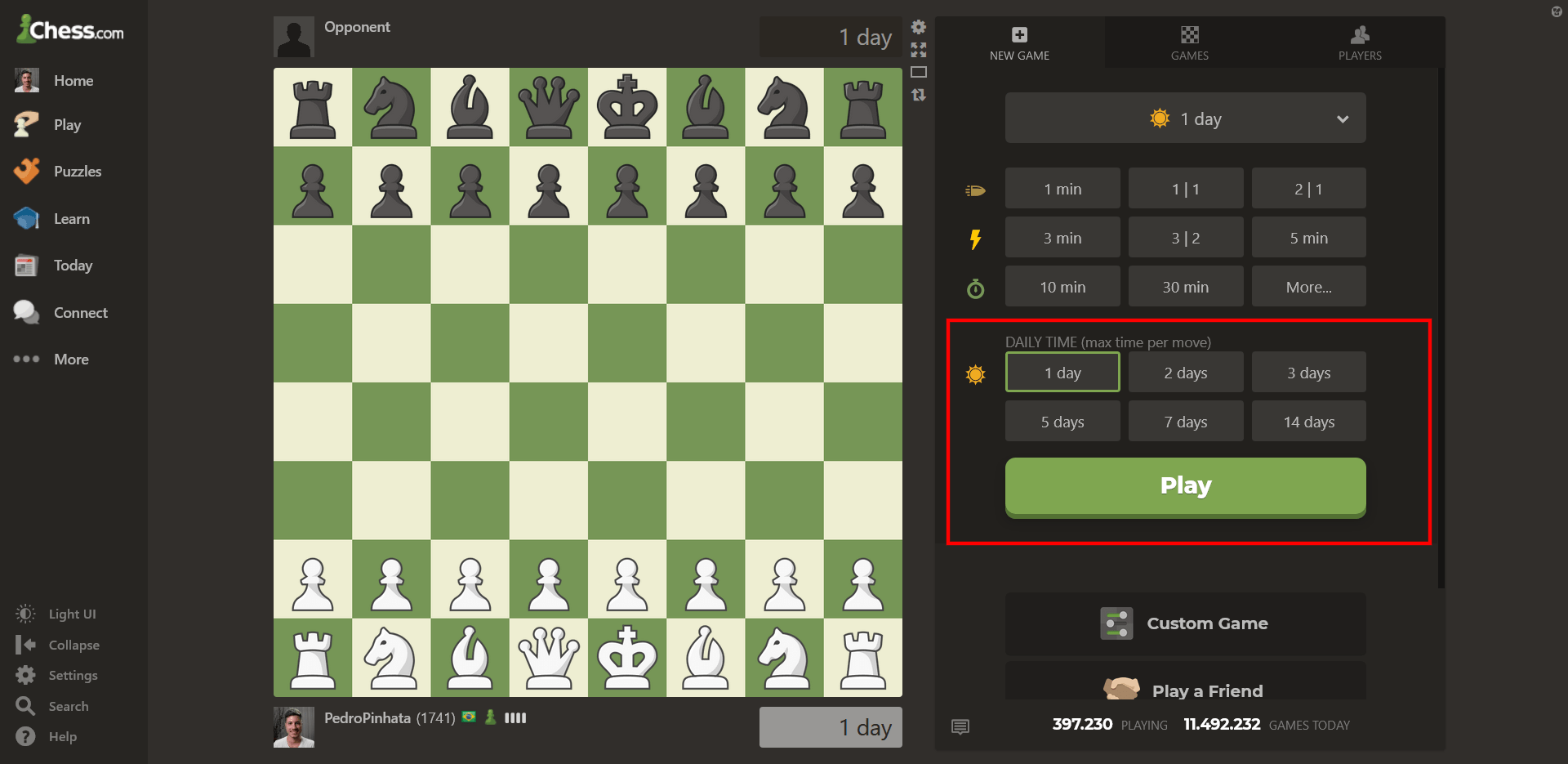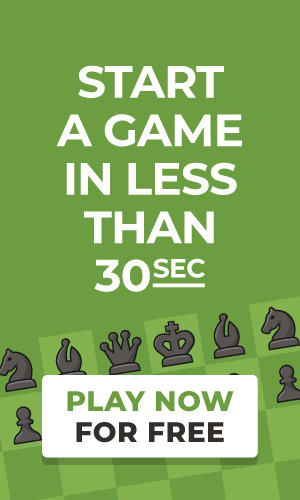
Correspondence Chess
Correspondence chess is a popular form of chess, but how does it differ from a regular chess game? Is it a chess variant or just a different time control? Let’s find out what correspondence chess is and what it looks like today.
Here is what you need to know about correspondence chess:
- What Is Correspondence Chess?
- International Correspondence Chess Federation (ICCF)
- Issues With Older Forms Of Correspondence Chess
- How To Play Daily Chess On Chess.com
- Conclusion
What Is Correspondence Chess?
Correspondence chess (known as Daily Chess on Chess.com) is just like any other game of chess with one exception: it is played remotely and does not require both players to play at the same time. Each player has considerably longer to make a move, reducing the potential for blunders in correspondence games and leading to higher quality games.
In the past, players would use pigeons and postal systems to send their moves to each other. This eventually evolved into people playing via email, and nowadays people can play correspondence chess online. The average time control is one to three days per move. Daily chess games can take months to complete, but players can play considerably more games at the same time. Some Chess.com users play 100 games simultaneously.

International Correspondence Chess Federation (ICCF)
Correspondence chess has many governing organizations, but the International Correspondence Chess Federation (ICCF) is the largest and is affiliated with FIDE. The normal time limit for ICCF games is 30 to 60 days for every 10 moves (not counting shipping time for postal chess).
Just like FIDE, the ICCF awards titles to players like the international master title and the international correspondence chess grandmaster title. Many strong chess players have played both over-the-board (OTB) tournaments as well as correspondence chess, earning the grandmaster title for both forms of the game. One example is the chess legend GM Ulf Andersson, who was ranked number one in correspondence chess in 2002.

Issues With Older Forms Of Correspondence Chess
Unfortunately, non-digital forms of correspondence chess ran into some problems. The largest issue has been the rise of computer engines.
Another issue that previous forms of correspondence chess had was the way that moves were sent internationally. They created their own system for notation/sending moves, but it was not entirely intuitive and made the entry barrier more difficult for correspondence chess. Here is an example of a postcard used for international correspondence chess:

Consulting opening and endgame materials has always been acceptable during correspondence chess. As opening materials evolved from books to opening databases, this practice has now become the norm. The same technological advances happened in endgames with tablebases and large reference works becoming a must-have for any serious correspondence player.
All of these changes were fine until extremely strong and widely-accessible chess engines began popping up. Each correspondence organization has different rules for engine usage, but the variance regarding these rules has made playing difficult. Perhaps the simplest way to handle this issue is to not allow engines at all.
On Chess.com, you are not allowed to use engines in any capacity.
How To Play Daily Chess On Chess.com
As mentioned, Chess.com’s version of correspondence chess is called Daily Chess and can be accessed easily. After going to our Play page, you can click the dropdown menu to choose any of the time control options available.

Please note that you are allowed to use opening databases (like Opening Explorer) on Chess.com, but you are not allowed to use any other outside help like engines or endgame tablebases.
Conclusion
You now know what correspondence chess is, what the ICCF is, how to play correspondence chess on Chess.com, and more. Try out some daily chess today!









